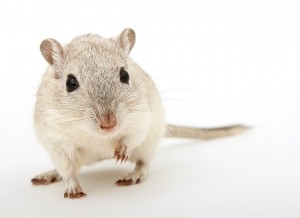 As the weather gets a little cooler in Massachusetts all kinds of critters, rodents and bugs want to start calling your house a home.
As the weather gets a little cooler in Massachusetts all kinds of critters, rodents and bugs want to start calling your house a home.
Since the best defense is a good offense, you should start by sealing off suspected entry points, which might include gaps in your exhaust vents or tiny vulnerabilities near where your cable wire enters your home.
Walk around the whole exterior of your home and look for any crevices or openings that are large enough for light or air to pass through because pests are extremely resourceful and persistent.
How to Slam Shut Pests’ Window of Opportunity
Mice can slip into holes that aren’t much larger than a thimble and larger pests like possums and raccoons unfortunately also have that same entrepreneurial spirit when it gets cold enough. These bigger creatures only need a gap about as wide as a football to make it inside.
Pest control services call the process of scrutinizing the exterior of your home and plugging up any vulnerabilities you come across “exclusion,” since you’re excluding critters, pests, and bugs from making inroads.
Squirrels can also be an issue for pest control in Quincy, Massachusetts—and the surrounding areas—so also check for gaps in your roof, garage and basement. Dryer damper doors, chimneys and gutters should be checked periodically too.
Doors and Windows are a Pests’ Best Friend
Too many New England homeowners quickly jog around their homes looking for large holes near bushes and shrubs and call it a day when they come up empty.
Thinking that they’ve done the arduous fall legwork to prevent winter problems, they’re later shocked to hear scratches and the tell-tale pitter-patter of raccoons and other uninvited guests come January.
This could probably all have been avoided by those same homeowners taking the time to repair ripped screens on their doors and windows. Torn screens and worn weatherstripping are two prime suspects that pest control specialists often thumb in their troubleshooting process.
Fixing worn weatherstripping is a surefire means of reducing the chances that small bugs can slip into your home undetected. Using caulk or applying weatherproofing foam around your windows and your door frames can also close the door on pest home invaders.
Secondary Measures: Check Your Garden, Roof and Foundation
These checks wouldn’t be on the first of most homeowners’ lists but the truth is that you should be looking into your garden as the fall season comes to a close.
Gardens can be breeding grounds for various insects and provide cover for rodents until they endeavor to make their great escape into your warm home this cold season. Trimming weeds, shrubs and bushes and keeping both plants and yard refuse at least a few feet from your home’s exterior gives pests less of a chance to thrive.
Pest control services say that tree branches, especially those that make a serpentine route up to second-story bedrooms, can be a means for bugs and smaller pests to slip into your home undetected.
Squirrels and raccoons are also known for using tree branches as a means of getting into your home via your roof’s soffit and fascia.
Your Roof
Holes and vulnerabilities in your roof’s underside—especially around the soffit and fascia—are prime spots for wasps to build nests and all kinds of small-to-medium sized pests like squirrels and raccoons to sneak into your home under the cover of darkness. That’s definitely something you don’t want.
Just remember to be careful on ladders when making a visual inspection and don’t shy away from calling a nearby pest control specialist if you feel out of your depth or if your roof is too high to safely make a thorough inspection of the soffit and fascia.
Your Foundation
Yet another motivation to make a thorough inspection of your home’s exterior is that you might come across recent vulnerabilities in your home’s siding.
Your home might recently have had its foundation shift slightly or have suffered rot damage, which can both leave gaps near your home’s siding large enough for critters to find their way into your home.







